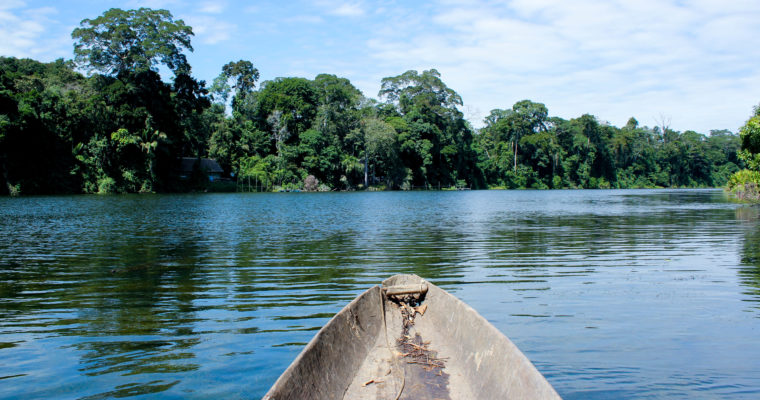July 14th-20th, 2016


We got to spend a full week at the beautiful Cocha Cashu. I wish I could fully describe the place because it was nothing short of a dream. We were at our lowest elevation so the wildlife was the most diverse we had seen and so untouched by humans. The field station was on a lake (“Lake Cashew” because it’s shaped like a cashew) full of piranhas, caiman, and river otters. Most days I got to take a little wooden canoe across the lake to get to a trail that’d take me to a leaf cutter ant colony where I worked on my independent project. We slept in tents on raised wooden platforms, learned how to salsa dance, played beach soccer and euchre constantly, risked swimming in the river, and saw wildlife I might never see again!!

Cocha Cashu had platforms for our tents, a main kitchen cabin, a change room cabin, a lab cabin, a shower cabin, and composting toilets. After settling in, all of the students started thinking about independent projects. A woman who worked at the field station showed me and another student a massive leaf cutter ant colony. It was 12 m by 9 m and had three main trails of ants coming into it. I became obsessed with the colony and the ants.

I had two projects to work on. The first was more of a test experiment. I really wanted to do a mark and recapture study to estimate the colony size to see if the leaf size that ants cut was correlated. The problem was that a colony typically has five million ants so for even a chance for the experiment to work I’d need to mark and recapture 33,000 ants. So it was a bit of a shot in the dark but I captured about 50 ants and my professor plus another woman with a PhD sat and helped me mark them with pink nail polish. I then released them back into the colony. I never saw the pink ants again.

For my working experiment, I measured ant length and leaf surface area and compared the two to see if they were correlated. It was tedious going out each day across the lake to collect and number ants and their respective leaves. I then had to come back to the lab, put them in the fridge so they’d go into hibernation mode, individually measure each ant and its leaf, and then return them all across the lake to their colony. However, another student was also studying the ants so we’d have fun helping one another and coming up mini experiments to run like finding the average ant velocity.


Apart from following ants around all week, I woke up some mornings to observe the river otters with one student, went on a trail walk with another student to check for monkeys, mist netted, found puma tracks and saw photos of it and its cub from a motion sensor camera, and of course did vegetation plots one last time.

When we weren’t working we were eating, playing euchre, or just enjoying being in the Amazon. The Saturday night we were there was especially fun because Saturday is party night at Cocha Cashu. We got popcorn before dinner, had the best homemade pizza ever (there was fruit on it!!), and played music and danced. It was heartbreaking to leave but we had a long three day trip on boat and bus to get back to Cusco.

